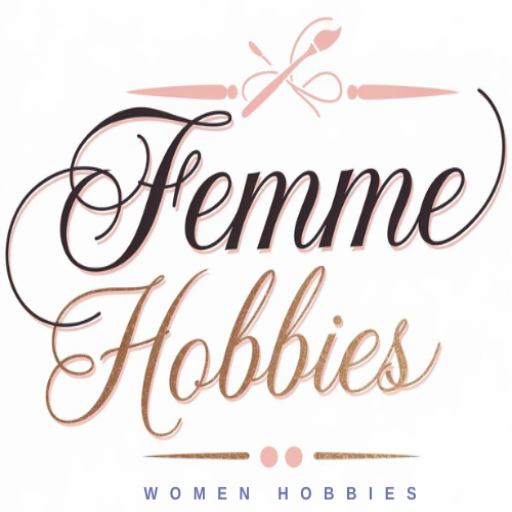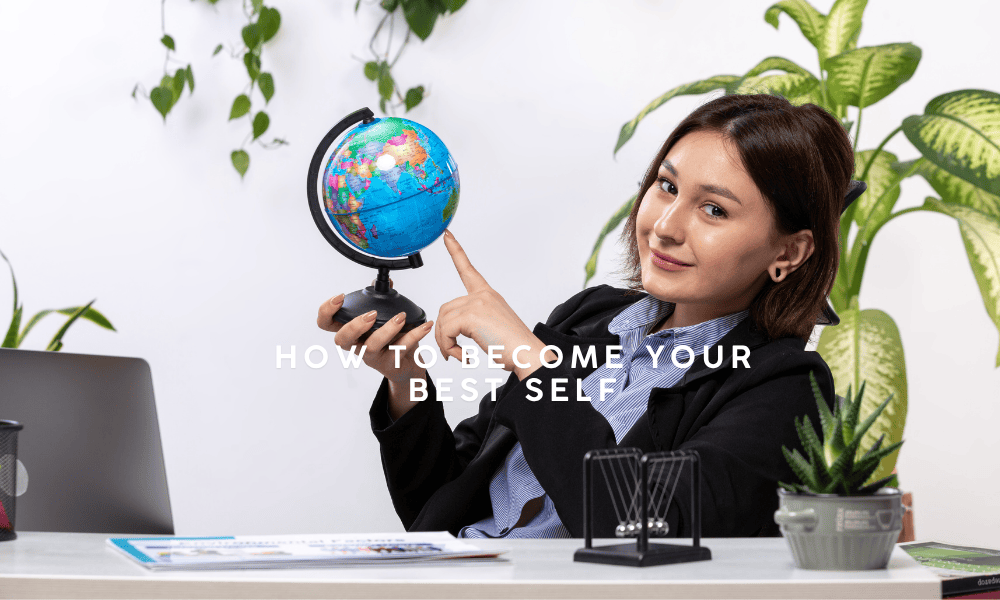Let’s be honest, the phrase being your best self can feel a bit… cringe. It brings to mind images of 5 a.m. wake-up calls and toxic positivity, leaving you feeling more inadequate than inspired. The meaning behind be your best self has been twisted into an impossible standard of perfection that exhausts us before we even begin.
I know because I Have been there. As someone who burned out in a corporate career, I chased a version of success that left me exhausted and empty. My journey wasn’t about becoming the best, it was about rediscovering who I was underneath all the pressure and building a life that fit me. The countless becoming your best self books and quotes felt hollow when I was running on fumes, trying to optimize my way out of misery.
So, let’s reframe it. Let’s talk about becoming your Aligned Self. This is the version of you that makes decisions from a place of core values, has the energy to pursue meaningful goals, and finds joy in the everyday. It’s sustainable, it’s authentic, and it’s entirely yours to define. This isn’t about being your best self in a relationship or at work by following someone else’s blueprint—it’s about discovering your own.
This guide is a map for that journey. We’ll move through 7 natural phases, from untangling your past conditioning to building a future that genuinely excites you. Each phase builds on the last, creating a foundation for sustainable personal growth that doesn’t require you to become someone you are not.
Phase 1: The Audit – Uncover Your Operating System
This isn’t just about defining success; it’s about achieving it. It’s about conducting a compassionate audit of your life, understanding the invisible programming that has been guiding your decisions without your conscious input.
Most of us operate on autopilot, following scripts written by parents, society, or past versions of ourselves. Before we can become our aligned self, we need to see what’s actually happening in our lives right now. Think of this as debugging your personal operating system.
I use a simple but powerful framework called the Wheel of Alignment, a variation on the traditional Wheel of Life, but focused on Energy, Values, and Satisfaction across eight key life areas: Career, Relationships, Health, Finances, Personal Growth, Recreation, Physical Environment, and Contribution.
Actionable Exercise: Grab your journal. For each segment of the wheel, score your current satisfaction (1-10) and, more importantly, your current energy drain or gain (-5 to +5). A high-satisfaction but energy-draining area signals misalignment. A lower-satisfaction but energy-giving area might just need more attention. The goal here isn’t judgment; it’s data collection.
For example, you might rate your career satisfaction as an 8, but notice it drains your energy at a -3. This data point reveals that while you’re succeeding by external metrics, something fundamental isn’t aligned. Maybe it’s your values, your environment, or the way you are approaching your work.
Phase 2: The Foundation – Digging to Your Core Values
Move beyond just listing values. Most values exercises give you a generic list to choose from, but your real values—the ones that drive alignment, are discovered through your lived experience. We’re looking for your non-negotiable values: the ones that, when violated, cause immediate stress and burnout.
For me, Freedom and Autonomy are core. I didn’t realize this until I was in a job with micromanagement, and my health plummeted within months. My body was giving me data I hadn’t learned to read yet. That physical response was my system telling me a core value was being trampled.
Values aren’t aspirational, they’re operational. They are the principles that, when honored, generate energy and satisfaction in your life. When they’re violated, you feel it in your body before your mind catches up.
Actionable Exercise: Think of a time you felt deeply frustrated, resentful, or drained. What value was being violated? Now flip it: think of a peak moment of joy, pride, or energized flow. What value was being honored? This contrast creates your unique values shortlist—usually three to five core values that are uniquely yours.
Pay attention to the language that emerges. Maybe Freedom resonates, or maybe it’s Independence or Flexibility. The specific word matters because it carries your personal meaning and history.
Phase 3: The Vision – Crafting Your Why with Story
Instead of writing a standard vision statement, we’re going to tap into something more powerful: your brain’s natural wiring for story. Narrative psychology shows us that we understand ourselves and our possibilities through story, not through bullet points.
Your vision isn’t a destination, it’s a compass. It gives you direction while allowing for different paths, detours, and discoveries along the way. The most powerful visions are sensory and emotional, not just intellectual.
Actionable Exercise: Write a journal entry from your Future Aligned Self. Don’t just list achievements—write a story. It’s a Tuesday morning, one year from now. I wake up feeling… I spend my morning… The work I do matters because… Be sensory. What do you see, feel, and hear in this aligned life?
This exercise answers the deeper question of how to be your best you—not by copying someone else’s definition, but by imagining your own life fully expressed. Write about how you show up in relationships, how you approach challenges, and what energizes you throughout the day.
The key is specificity without rigidity. You want enough detail to feel emotionally connected to this future self, but enough flexibility that you don’t trap yourself in a single path forward.
Phase 4: The Blueprint – Designing Value-Driven Experiments
Traditional goal-setting often fails because it treats goals as pass/fail tests rather than learning opportunities. Let’s reframe goals as experiments, hypothesis-driven actions that generate data about what works for you.
Your vision from Phase 3 is a compass, not a GPS. It gives you direction, but you can take different paths to get there. Some experiments will work brilliantly. Others will teach you what doesn’t fit your life right now. Both outcomes are valuable.
The beauty of experiments is that they remove the pressure to get it right immediately. Instead of committing to running a marathon (and potentially burning out), you might experiment with a 10-minute morning walk to test whether movement creates energy for your day.
Actionable Exercise: Pick one area from your Wheel of Alignment that scored low on satisfaction or energy. Based on your values and vision, design one small, 2-week experiment. For example, if Health is low and Vitality is a core value, your experiment could be a 10-minute walk after lunch every day for 2 weeks. Observe the results without judgment, just gather data.
This approach works whether you’re figuring out how to be your best self in a relationship (experiment with a weekly check-in ritual) or being your best self at work (experiment with time-blocking your most important tasks).
Phase 5: The Engine Room – Mastering Your Energy, Not Just Your Time
Here’s where most productivity advice gets it wrong: it focuses on managing time when the real game-changer is managing energy. You can have all the time in the world, but if you are drained, you won’t show up as your aligned self.
Energy management recognizes that we all have energy dragons, activities, people, or environments that consistently drain us, and energy generators—things that fuel and restore us. The goal isn’t to eliminate all dragons (some are necessary), but to be strategic about when and how we engage with them.
Traditional habit-tracking often fails when we’re running on empty. When you’re energized, good habits feel effortless. When you’re drained, even simple habits feel impossible. Start with energy, and habits become natural extensions of how you want to feel.
Actionable Exercise: For one week, track your energy, not your time. Note what activities, interactions, and environments spike or crash your energy levels. Don’t track everything—just pay attention to the patterns. Your mission: schedule more generators and find ways to mitigate your biggest dragons.
This deeper understanding of energy is part of what being your best self really encompasses—having the fuel to show up as that person consistently, not just in peak moments.
Phase 6: The Rituals – Building a Sustainable Care Protocol
Self-care isn’t frivolous—it’s functional. It’s the infrastructure that allows your Aligned Self to operate consistently. But forget the Instagram version of self-care. We’re talking about the minimum viable actions that create maximum impact on your ability to show up.
My own non-negotiables aren’t glamorous: 7 hours of sleep, a protein-rich breakfast, and a 5-minute transition ritual between work and home. Boring? Maybe. Game-changing? Absolutely. These simple practices create the foundation for everything else.
The key is identifying your personal minimum effective dose, the smallest possible actions in each wellness category that create 80% of the positive impact. This isn’t about perfection; it’s about sustainability.
Actionable Exercise: Design your Daily Care Protocol around five wellness principles: sleep, nutrition, movement, stress management, and connection. For each area, identify the minimum viable action that would make the biggest difference. Maybe it’s setting a phone alarm for bedtime, keeping protein bars in your desk, or texting one friend per day.
This protocol becomes your safety net—the practices that keep you balanced and energized even when life gets chaotic. Think of these as synonyms for be your best self, balanced, energized, resilient, present.
Phase 7: The Compass – Embracing the Practice, Not the Destination
Alignment isn’t a destination you reach and then maintain forever. It’s a daily practice of checking in with your values, adjusting your course, and choosing actions that honor who you’re becoming.
Some days, your Wheel of Alignment will be lopsided. You’ll forget your values and get sucked into old patterns. The difference is you now have a compass—this 7-phase map—to find your way back. The goal isn’t perfection; it’s conscious course-correction.
The journey of becoming your aligned self is unique to you. There is no universal blueprint, no one-size-fits-all approach. What works for someone else might drain your energy or violate your values. Your job is to trust your own data, honor your own experience, and keep experimenting.
As you move through these phases, remember that becoming your best self isn’t about achieving some ideal version of perfection. It’s about becoming more fully yourself—values-aligned, energy-aware, and purposefully engaged with your own life.
Your journey is entirely your own. Bookmark this guide, return to these phases when you feel stuck, and remember: progress over perfection, always.
The aligned self isn’t perfect—it’s present. It’s not optimized, it’s authentic. And it’s not a destination—it’s a practice of returning home to who you really are.

